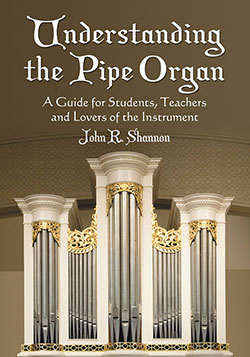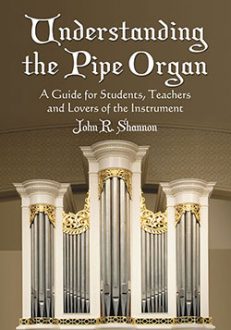Understanding the Pipe Organ
A Guide for Students, Teachers and Lovers of the Instrument
$29.95
In stock
About the Book
The pipe organ, an instrument whose origins date to ancient Greece, is prominent in the development of secular and church music, and its builders were as artistic as the composers like Bach, Pachelbel and Handel who played them.
This book describes the mechanics, fabrication, and acoustics of all types of pipe organs. Although it is technical in nature, its design, descriptions, and language are directed to organ students, their teachers, and all persons who love the organ. The book covers the construction of several types of pipe organ, with chapters on actions, chests, pipe work, wind supply, electrical circuitry, mechanics, registration, organ placement, acoustics, and repairs.
About the Author(s)
Bibliographic Details
John R. Shannon
Format: softcover (7 x 10)
Pages: 204
Bibliographic Info: 163 photos, glossary, bibliography, index
Copyright Date: 2009
pISBN: 978-0-7864-3998-0
eISBN: 978-0-7864-5286-6
Imprint: McFarland
Table of Contents
List of Figures viii
Introduction 1
1. The Principal Components of the Organ 5
2. The Wind Supply 14
3. Mechanical Action 25
4. Electric Action 44
5. Organ Chests 62
6. Unification and Duplexing 83
7. Aids to Registration 91
8. Acoustics of Organ Pipes 109
9. Pipework 129
10. Achieving Optimal Sound Through Location and Placement 151
11. Can You or Should You Fix It Yourself? 162
Glossary 173
Bibliography 187
Index 189
Book Reviews & Awards
“a beautiful, handy, easy-to-read manual…the most useful and valuable guide to the organ to appear in any language in many years. It is hard to imagine a more thoroughly useful book than this; it should be placed in the hands of every conscientious organist and kept at the console of every organ in the country”—The Diapason; “will be useful”—ARBA.





